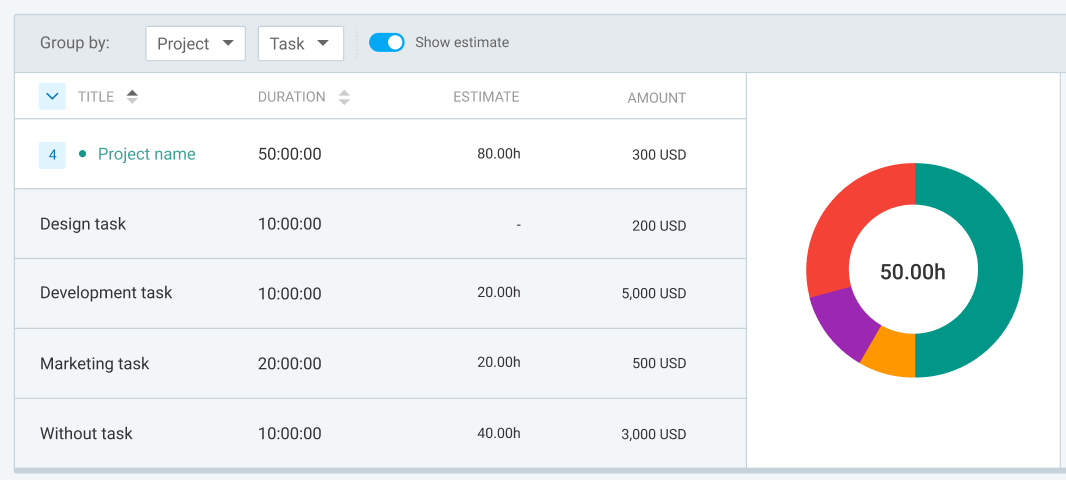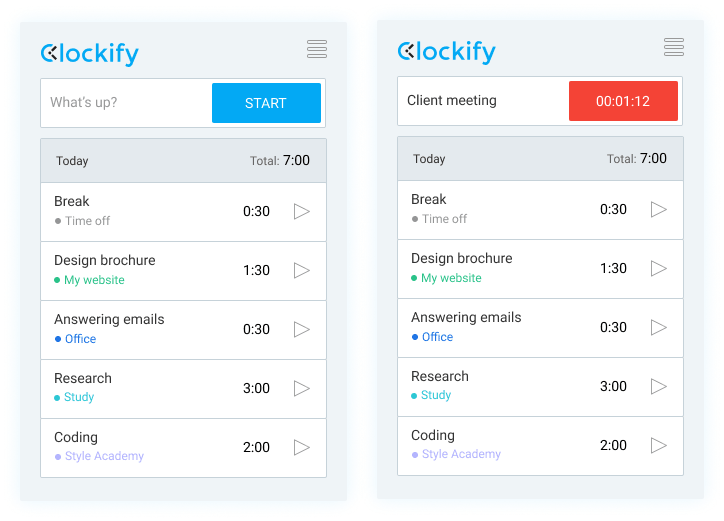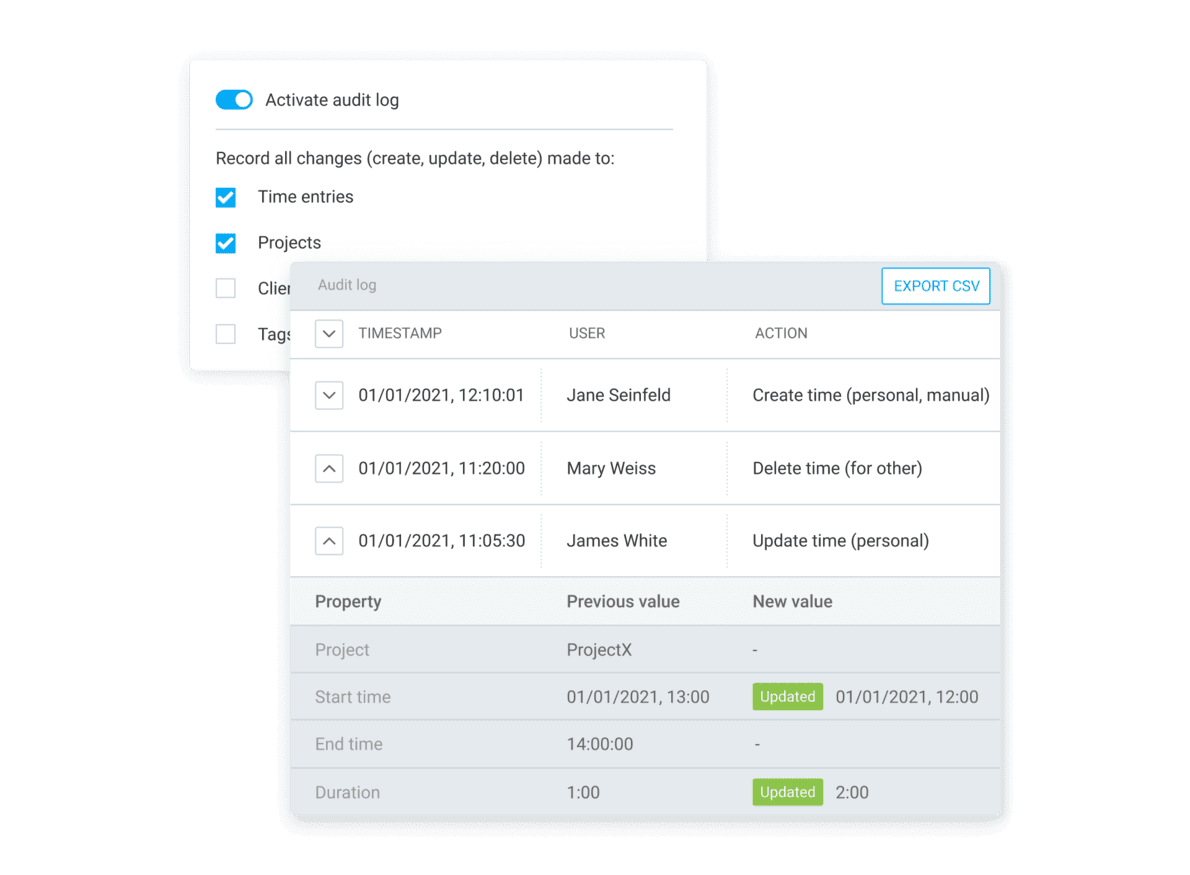Setting goals is a vital part of all types of development — personal, professional, business, industry, country, and even society as a whole. Pursuing goals and achieving them helps us grow, as those goals serve as a roadmap and guidance in life.
Also, the process of achieving our goals is at least equally beneficial. During it, we learn to organize and manage our time better and be more accountable for our actions.
This article will help you understand what matters most in goal-setting, as we’ve meticulously researched and covered the following topics:
- What goals are,
- How to choose a goal to pursue, and
- The steps to achieve your goals.
So, let’s start from the beginning.

Table of Contents
What are goals?
Goals are specific targets that we set and plan to reach — the desired results and outcomes of our efforts and actions. The process of pursuing a goal is comparable to being on a mission — we have an objective in mind and need to take all the necessary steps to complete that mission.
To start scratching the surface of what different types of goals can be (both professional and personal), here are a few examples:
- Finish the project by the end of the month.
- Move into the larger apartment before the baby comes.
- Apply for a scholarship and study a semester abroad.
- Go for a walk and eat vegetables every day.
- Learn to embrace and accept your partner’s flaws.
- Increase your savings by 5% each month.
- Learn French.
What are the metrics for tracking your goals?
Metrics for tracking goals largely depend on the way you’ve defined your goal.
As the examples above show, some goals are precisely defined, while others are more abstract. Metrics such as “by 5%” specify what we need to track and exactly what needs to be completed. On the other hand, the only metric in a more abstract goal, such as in “accepting our partner’s flaws,” is our gut feeling, more or less.
Furthermore, some goals are time-limited and have measurable performance indicators, while others require introspection, and the only indicator is how you feel about the outcome.
Following the examples above, “by 5%” and “by the end of the month” would be performance indicators, and they ultimately show us whether the goal was reached or not.
What are the 3 categories of goals?
Setting goals is a cornerstone of success as goals give us direction and help us pinpoint what’s important to us. To help you understand the core principles of goal-setting better, we’ll make a distinction between 3 different categories of goals:
- Goals based on time,
- Goals based on results, and
- Goals based on aspects of life.
Let’s explore each of these categories in more detail.
💡 Clockify Pro Tip
Note that priorities change over time, so you’ll need to learn to re-prioritize as well. If you’re interested in learning about different prioritization methods you can try out, check out this article on the topic:
Category #1: Goals based on time
The first major distinction in the types of goals is related to the timeframe for completing the set objective. Depending on the time span they refer to, goals based on time can be divided into 2 sub-categories:
- Short-term goals, and
- Long-term goals.
While short-term goals refer to the near future, typically up to 3 months, long-term goals can include the plan for decades to come or even the span of our whole lives.
Now, let’s check out a breakdown of the differences between these 2 types of goals in more detail.
💡 Clockify Pro Tip
When it comes to planning, there are some major differences in the approaches between long-term and short-term plans. If you’re interested in learning more about the topic, this guide is a must-read:
Short-term goals (+ examples)
Short-term goals have a relatively immediate timeframe and are achievable within days, weeks, or months. They usually act as stepping stones, helping us break down complex and long-term objectives into manageable, actionable steps.
Examples of short-term goals:
- Reduce screen time by 30 minutes by the end of the week.
- Reorganize and clean the basement.
- Bring lunch to work at least 3 times this week.
- Finish the narrative report that’s due on Wednesday.
- Reflect on a recent argument with a family member and think of a constructive way to resolve the issue.
As the examples above indicate, short-term goals must be set as realistic targets that don’t take much of our time (or energy). Just think of them as items you’ll easily and frequently cross off your to-do lists.
However, the importance of short-term goals should not be underestimated — they help us monitor routines. It’s exactly the combination of our routines that shapes our mindset and, ultimately, our personality.
Long-term goals (+ examples)
Long-term goals have an extended timeframe of at least a year, requiring sustained effort, commitment, and dedication. They tend to be broader and less detailed than short-term goals, outlining the major achievements and life-changing outcomes.
Examples of long-term goals:
- Improve relationships with a certain family member.
- Find a career that you love.
- Be your own boss.
- Become a better listener.
- Stay profitable and increase revenue on a yearly basis.
As the examples above show, long-term goals are more complex in a way that they provide a sense of direction and purpose over the course of a whole life. Hence, they require careful planning and ongoing commitment to shape one’s overall life trajectory.
💡 Clockify Pro Tip
It appears that the majority of people who have found their purpose in life and are achieving their long-term goals have many habits in common. Check out what is it that all those successful people do, and perhaps try to implement some things in your own routine:
Category #2: Goals based on results
The second group of goals is centered around the end-point of an objective. However, since the final result of a goal is highly dependent on both the process and your performance along the way, these types of goals can further be divided into 3 sub-categories:
- Outcome-oriented goals,
- Process-oriented goals, and
- Performance-oriented goals.
Let’s take a look at each of these types of goals up close.
Outcome-oriented goals (+ examples)
Outcome-oriented goals provide a clear target and are focused on the end result that we desire. They define what you want to achieve and are absolutely crucial for setting a clear target and measuring success.
Examples of outcome-oriented goals:
- Reduce company spending by 10% within a year.
- Win the first place in the competition.
- Run a marathon.
- Buy a house.
- Pass all the exams and graduate.
As the examples show, outcome-oriented goals provide a specific, tangible objective to work toward. There are no other metrics apart from answering the question of whether the goal has been achieved or not.
Process-oriented goals (+ examples)
Unlike the previous category, process-oriented goals prioritize the actions and behaviors necessary to reach an outcome. Since the process part is rarely irrelevant to the outcome, these types of goals help you focus on the journey and the steps you need to take to reach that ultimate end-point.
Examples of process-oriented goals:
- Learn to play an instrument by practicing each day.
- Practice a foreign language for 100 hours in the next 3 months.
- Write a to-do list every morning.
- Delegate at least 2 tasks each week.
- Keep weight under 120 pounds.
As the examples indicate, process-oriented goals are essential for tracking growth and ensuring that you are making progress.
Performance-oriented goals (+ examples)
Performance-oriented goals are centered on enhancing our skills and/or abilities. While achieving such goals, we concentrate on our personal growth and development.
These goals are also focused on the process, but more specifically on our performance. They help us build the necessary skills and capabilities to achieve our desired outcomes.
Examples of performance-oriented goals:
- Improve my public speaking skills.
- Become proficient in a foreign language by the end of next year.
- Be a better role model for my children.
- Attend at least 1 seminar or course per month, something relevant to my job title.
- Prepare and ace the presentation.
As the examples above show, performance-oriented goals prioritize the acquisition and refinement of skills, which will certainly lead to better outcomes and results in the long run.
💡 Clockify Pro Tip
There are various strategies you can use to improve your performance, and if you’re eager to check out some of the most useful ones to improve at work, here’s a guide you’ll appreciate:
Category #3: Goals based on aspects of life
The third category of goals revolves around the aspect of life you wish to place the emphasis on. Goals based on aspect of life can further be divided into:
- Topic-oriented goals, and
- Focus-oriented goals.
Let’s check out how topic and focus-oriented goals work in practice to help you get the picture of these two specific types of goals.
Topic-oriented goals (+ examples)
Simply put, a topic-oriented goal is the one related to a specific aspect of your life — whether it’s your health, profession, personal life, finances, etc. Topic-based goals can be either short-term or long-term goals, but what differentiates them from other types of goals is that they are usually organized around one central theme.
Examples of topic-oriented goals:
- Start running.
- Eat healthy.
- Go for a walk 3 times a week.
- Lose 20 pounds.
- Drink more water.
As seen in the examples above, all goals revolve around one specific area of life — health. However, you can come up with many topic-oriented goals for different aspects of your life (education, profession, etc.) and work on achieving them simultaneously.
Focus-oriented goals (+ examples)
Similarly to topic-oriented goals, focus-oriented goals are linked with specific areas of your life. However, unlike topic-based goals, focus-oriented goals are the objectives you set out to achieve knowing they would impact several aspects of your life.
Examples of focus-oriented goals:
- Pursue a Master’s degree.
- Move to California.
- Start your own business.
- Buy a new house.
- Become a Software Developer.
As the examples above show, focus-oriented goals are usually bold, long-term objectives that require steady commitment and affect multiple areas of your life at the same time.
Moving to California, for example, may affect both your personal and professional life since it would probably require you to change your job and be away from your family.
How are all three categories of goals interconnected?
By their nature, our goals can be set in relation to different aspects of our lives, such as:
- Personal goals,
- Career goals,
- Financial goals,
- Relationship goals,
- Fitness goals,
- Academic goals,
- Spiritual goals,
- Family goals,
- Intellectual goals,
- Social goals, and
- You can name it goals.
Each of the above-listed goals can actually belong to each of the 3 main categories of goals, depending on our needs at the moment.
In fact, whichever goal you set it would probably be:
- Defined within a certain time frame,
- Centered around a particular result, and
- Related to at least one aspect of your life.
Let’s say you have decided to pursue a career in marketing. Since such an objective requires ongoing effort and commitment, your goal would fall under the category of long-term goals.
Also, being directed toward a specific end-point (getting a job in this field), the objective of beginning a career in marketing could be defined as an outcome-oriented goal.
Finally, pursuing such a bold achievement would probably impact other areas of your life. You may have to obtain a college degree or even move to another city. So, your goal of changing careers fits the profile of a focus-oriented goal.
Steps to achieve your goals
Achieving our goals is very important in life, as it comes with a sense of accomplishment, motivation, and a self-confidence boost. The combination of these further drives us to keep moving forward and set new goals, overcome new challenges, and grow.
To be able to do so, you’ll need to learn about strategic planning or a systematic and structured approach that significantly enhances your ability to achieve your goals.
Now, let’s quickly go over the key steps to the effective strategic planning process.
Step #1: Make your goals SMART
Achieving your goals will require you to work SMART, not hard. In fact, the very process would require you to be smart at the beginning and set goals that are:
- Specific,
- Measurable,
- Achievable,
- Relevant, and
- Time-bound.
This framework helps you create a structure for achieving your goal and measuring your progress along the way — as simple as that.
Turning your aspirations into actionable steps is easier once you define your goal by all the SMART criteria, as you’ll become more realistic with your expectations.
That means you’ll need to create a timeline, break your goal into smaller, more achievable, and measurable sub-goals, and work your way up towards achieving them.
💡 Clockify Pro Tip
Breaking your goals into smaller chunks and creating a day-by-day plan for achieving them requires thorough planning and organization. Here’s how to achieve that and remain consistent along the way:
Step #2: Specify and track milestones (and celebrate their completion)
Now that you have a defined SMART goal and a list of sub-goals, it’s time to establish the relation between the timeline and the completion of each sub-goal.
You should look at sub-goals as certain milestones and adapt your timeline accordingly. For example, here’s what your SMART goal and your first sub-goal can look like:
SMART goal: Increase social media reach by 20% by the end of the month.
One of the sub-goals: Create 20 social media posts by spending 30 hours/month on content creation.
Now, if you decide to track your progress along the way, you could set time estimates for each of your sub-tasks and see exactly how long it took you to complete them compared with the initial plan.
Clockify, for example, lets you track progress and compare your real execution time and previously made estimates. So, in case you misjudge how long it takes you to create 20 social media posts, you can immediately adapt the rest of your timeline in accordance with this time extension. This way you’ll set a more realistic target for the next milestone.

The thing is, milestones matter because they act as reference points and keep us grounded. So whenever our circumstances or priorities change, the only way to stay on track is to change what being on the right track means as well.
Step #3: Address all the dependencies (a.k.a. potential pain points)
Dependencies are elements or factors that can influence the outcome of a goal — either facilitating or hindering progress.
Take a look at the example of a goal that comes with the dependencies.
Create 10 videos for the new social media campaign by the end of the month.
So, for this example, your main dependencies (external factors) that are not entirely or at all up to you are:
- Video team’s availability,
- Content team’s availability, and
- Financial resources dedicated to video production.
As you can conclude, adequately identifying dependencies helps us grasp what the factors, resources, and conditions that our goal relies on are or that can influence its success. Failure to address any of them can hinder your progress or make the goal more challenging to attain.
Moreover, addressing potential obstacles helps in setting more realistic goals and time estimates for the execution of the said goals.
To effectively manage dependencies and their impact on your goal achievement, it’s vital to:
- Identify dependencies during the goal-planning phase,
- Coordinate execution of certain tasks, and
- Adapt and adjust your plan when dependencies change, or new ones emerge.
Step #4: Use software to monitor and track your goals
Software usage plays a crucial role in goal-setting and can significantly enhance the efficiency, organization, and success of the goal-setting process. Since we’re talking about the effort and time invested in the said process, know that you can take a significant load off your shoulders if you start using a goal tracker app.
Designed specifically for that purpose, goal trackers are, by far, the easiest way to monitor your progress, as well as a great reminder for the days when you’re feeling unmotivated to keep up pursuing your goal.

Apart from that, you can automate routine and recurring tasks that are necessary for your goals, hence freeing up both time and mental energy. Leveraging the power of technology here offers the advantages such as:
- Data-driven decision-making,
- Efficient task management, and
- Enhanced collaboration (if there are dependencies involved).

Bear in mind that defining which metrics you will use to track your progress is also vital, so think twice about how to measure success. Once you’ve done that, you’re on the right track to have a structured system that makes monitoring your goal progress easy (occasionally even fun).
💡 Clockify Pro Tip
If you’d like to explore the best goal trackers on the market but don’t know where to even begin, here’s another article that explains all the nuances. You can compare their functionality and see what the best choice would be for you:
Step #5: Re-evaluate, adapt, rinse, and repeat
Regularly review your progress to ensure you’re on track. That way, if you’re falling behind or facing unforeseen challenges, you can easily adjust your plan.
Bear in mind that flexibility is essential to staying ahead of the curve, as we’re all aware life’s hectic and often on the go.
Also, try to learn from experience, for real — conduct thorough evaluations after achieving each goal or even reaching a milestone. That way, you can identify what worked well, but also what could be improved when setting future goals.
FAQs about goals
In case achieving goals still seems out of reach, take a look at some of the most frequently answered questions about goals we’ve singled out for you.
How do I choose a goal?
If you’re not sure where to start when choosing your goal, here are some useful steps you can take to help you decide what your top priority at the moment should be:
- Reflect on your values,
- Categorize your goals,
- Set SMART goals — goals that are specific, measurable, attainable, relevant, and time-bound,
- Create a prioritization system, and
- Practice time management.
Be patient, and remember — consistency and adaptability are key to effective goal prioritization.
Also, bear in mind that adequately choosing and prioritizing between different types of goals improves over time as you learn to refine your approach. Moreover, your experience will provide insights and a better understanding of which criteria matter the most at the moment.
Which type of goal is the best?
First, there’s no one-size-fits-all solution and “the best overall goal.” Our circumstances and other external factors determine what is best to focus on pursuing at a specific moment.
What matters the most is that you:
- Align your goals with your values,
- Keep your priority goals in mind, and
- Define the exact metrics for tracking your goal.
How are values and goals connected?
When talking about goals, we must mention another concept — values. The two complement one another and can even be treated as dependencies. It’s because goals serve as specific steps you take to execute your values. While the latter represents your core beliefs and principles, your goals reflect the tangible expressions of those values.
The connection between goals and values is a profound and intricate one and is rooted in the fundamental principles that guide our behavior.
Having a defined set of values helps us notice and act on our aspirations. Answering the question, “What do I want to achieve?” becomes much easier if we are also aware of the answer to another one, “Why do I want to achieve that?“
Moreover, goals that are tied to your values are less likely to be abandoned when challenges arise. For example, if your values include empathy, compassion, and social responsibility, you’ll continuously set goals that have a positive impact on people around you.
To sum up, the alignment between values and goals is of the essence, as it encourages growth and boosts your chances of actually sticking to your goals once you set them.
Use Clockify to set clear and achievable goals
Frustration — that’s probably the first thing that comes to mind when you think about reaching your work objectives.
But it doesn’t have to be this way.
Instead, you can use a piece of time tracking software that lets you get to the bottom of your work habits.
For example, Clockify notifies you if you haven’t tracked enough time to achieve your goals.

With the Reminder feature in Clockify, you can add multiple reminders to track 7 hours per day or 150 hours per month. If you forget to track them, you can simply click on Add Time and manually add your skipped hours.
To keep yourself healthy and sane while executing work tasks, you can also set up whether you’ve tracked fewer or more than the target hours.

As you define the criteria for setting reminders, you can choose:
- Person who needs to track work hours,
- Amount of work hours,
- Period (week, day, month), and
- Persons you wish to notify.
So, if you don’t want to work for longer than 8 hours per day, you can set the reminder to More than 8 hours per day — and you’ll get a reminder if you track more than that amount.
To make reaching your goals more transparent for your whole team, you can look at your Audit trail in Clockify. This handy feature helps you see when people have updated the status of their projects and tasks, including the duration, start and end times, and other items.

With the Audit trail in Clockify, nothing falls through the cracks, and you have full transparency of what everyone’s up to at any given moment.
Apart from Clockify, you may even consider using other apps that’ll help you work towards your goals even more effectively. Namely, try combining Clockify with a team chat app called Pumble and a project management app, Plaky, to streamline goal achievement at a special bundle price.
Reach your goals faster.


